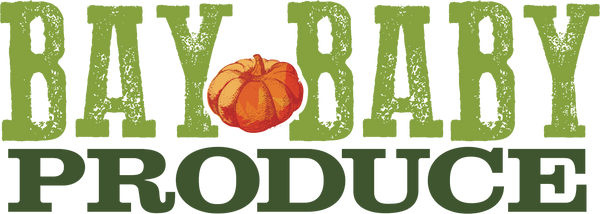FAQ Winter Squash and Pumpkins

Winter Squash
Q: What is winter squash?
A: Winter squash is a category of squash that includes various types like butternut squash, acorn squash, spaghetti squash, and pumpkin. It is called "winter" squash because it is harvested in the mature stage and has a thick, hard skin that allows it to be stored for an extended period, often through the winter months.
Q: Where did winter squash originate?
A: Winter squash is believed to have originated in the Americas, with evidence of its cultivation dating back thousands of years. Native American tribes, such as the Iroquois and the Cherokee, were known to have cultivated winter squash varieties.
Q: What are the nutritional benefits of winter squash?
A: Winter squash is a nutrient-dense vegetable. It is an excellent source of dietary fiber, which aids in digestion and helps maintain a healthy weight. It is also rich in vitamins A, C, and E, as well as minerals like potassium and magnesium. Additionally, winter squash contains antioxidants that have been linked to various health benefits, including reduced inflammation and improved immune function.
Q: How can I incorporate winter squash into my diet?
A: Winter squash is versatile and can be used in a variety of dishes. You can roast it, steam it, mash it, or use it as a base for soups and stews. It can also be used in salads, stir-fries, and even desserts like pies and bread. Experiment with different cooking methods and recipes to find your favorite way to enjoy winter squash.
Q: Are there any cooking hacks for preparing winter squash?
A: Yes, here are a few cooking hacks for winter squash:
- To make it easier to peel and cut, pierce the squash with a fork or knife and microwave it for a couple of minutes before handling.
- If you're short on time, you can cook winter squash in a pressure cooker or Instant Pot for quicker results.
- To enhance the flavor, drizzle the squash with olive oil and sprinkle with herbs or spices before roasting.
- Save the seeds! Clean and roast the seeds for a delicious and nutritious snack.
Q: How should I store winter squash?
A: Winter squash can be stored for several months if kept in a cool, dry place. Ideally, store them at temperatures between 50 to 60°F (10 to 15°C). Make sure to choose squash with no soft spots or blemishes for better storage life.
Q: Can I freeze winter squash?
A: Yes, you can freeze winter squash. However, it is best to cook it before freezing. Peel, seed, and cut the squash into cubes or puree it, then blanch it briefly in boiling water before freezing. Properly stored, frozen winter squash can last for up to 12 months.
Q: Can I eat the skin of winter squash?
A: The skin of winter squash is edible, especially when cooked. However, some varieties may have tougher or thicker skins that are more suitable for peeling. It's a matter of personal preference, so you can choose to eat the skin or remove it before cooking. We recommend eating Delicata squash for the best eating experience for skin-on squash!
Q: Can I substitute one type of winter squash for another in recipes?
A: Yes, in many recipes, you can substitute one type of winter squash for another. However, keep in mind that different varieties may have slightly different flavors and textures, which can impact the final result. Adjust cooking times and methods accordingly

Pumpkins
Q: What is a pumpkin?
A: A pumpkin is a type of winter squash that belongs to the Cucurbitaceae family. It is typically round or oval with a thick, orange or yellow skin, and contains a pulpy interior with numerous seeds.
Q: Where did pumpkins originate?
A: Pumpkins are believed to have originated in North America, particularly in the region that is now Mexico and Central America. They have been cultivated for thousands of years and have become a symbol of fall and harvest season in many cultures.
Q: What are the nutritional benefits of pumpkins?
A: Pumpkins are highly nutritious and offer several health benefits. They are low in calories and fat but rich in fiber, vitamins A and C, potassium, and antioxidants. The vibrant orange color of pumpkins comes from beta-carotene, which is converted into vitamin A in the body and supports eye health and immune function.
Q: Can I eat all parts of a pumpkin?
A: Yes, you can eat most parts of a pumpkin. The flesh is commonly used in cooking, while the seeds are edible and often roasted or used in various recipes. The skin can be tough and is typically removed before consuming, although some pumpkin varieties have more tender skins that can be eaten when cooked.
Q: How can I incorporate pumpkins into my diet?
A: Pumpkins are versatile and can be used in a variety of dishes. You can make pumpkin puree for pies, bread, and muffins. Roasted pumpkin can be added to soups, stews, salads, and pasta dishes. Pumpkin seeds can be roasted and enjoyed as a snack or used as a topping for salads, granola, or baked goods.
Q: Are there any cooking hacks for preparing pumpkins?
A: Yes, here are a few cooking hacks for pumpkins:
- To make it easier to cut, microwave the pumpkin for a couple of minutes or place it in the oven for a short time to soften the skin.
- If you find it tedious to remove the seeds, cut the pumpkin into large pieces and roast them with the seeds still inside. Once cooked, the seeds can be easily separated from the flesh.
- When making pumpkin puree, choose smaller, sugar or pie pumpkins as they have a sweeter flavor and smoother texture.


